Статьи журнала - Вестник Волгоградского государственного университета. Серия 2: Языкознание
Все статьи: 1505
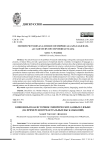
Motion pictures as a source of empirical language data (a case study of counterfactuals)
Статья научная
The article focuses on the problem of research methodology in linguistics and argues that motion pictures, or feature films, provide a good source of empirical data for a realistic investigation of language as a communicative behavior. Evidence from epistemologyand philosophy of science shows that scriptism and rationalism as two dominating methodologies in traditional linguistics do not give a whole picture of language functionality because through them we cannot observe a human’s communicative behavior in dynamics. The aim of the article is to offer an alternative understanding of the subject-matter, method and data for linguistic research which would be grounded on human experience observable in films. In particular, the term ‘languaging’ is adopted to describe the dynamic process of experience construction in referential and attentional framings. The investigation of languaging is thus based on the principle of holism, circularity and ‘double perspectival’ view of one’s experience. The author of the article gives a number of reasons why written texts alone do not provide reliable data in this respect and why motion pictures are a more viable alternative. The paper introduces the methodology of holistic research and open-ended experiential analysis and demonstrates in a case study how counterfactuals as grammatically and experientially enacted patterns can be observed and investigated in the film Atonement .
Бесплатно
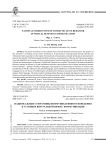
National stereotypes of communicative behavior in virtual business communication
Статья научная
The article is devoted to cross-cultural issues of virtual business communication. The urgency of this research is in finding out the causes of failures in virtual business communication between Russian and Vietnamese business partners. In the aspect of intercultural communication, national stereotypes of communicative behavior (hereinafter NSCB) that impede the effective business communication of Russian and Vietnamese speakers have been identified. In the aspect of virtual communication, based on linguistic and cultural analysis, the specifics of electronic business letters in Russian, English and Vietnamese is revealed. The results of the study indicated the following reasons of failures in virtual intercultural business communication: lack of direct interactions between business partners - speakers of different languages; representation of communicative intentions in written form; peculiarities in NSCBs, reflected in the national language; cultural differences in NSCBs of business partners; each language has its own means of verbalizing the communicative intentions associated with the NSCBs of the native speaker of that language. The study resulted in distinguishing the types of speech and etiquette violation in virtual business communication between Russian and Vietnamese partners, which might help in lessening communicative misunderstanding and achieving extra-linguistic goals of communication.
Бесплатно
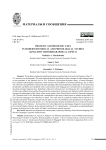
Статья научная
The problem of phonetic and phonemic laws reconstruction in the works of linguists of the 19th - 21st centuries was investigated. The study demonstrated the significance of the concepts of sound changes based on the postulate of the phonetic law by E.D. Polivanov (convergent-divergent theory of sound changes),R.O. Jacobson (phonological mutations), which became the foundation of historical phonology, due to whichV.K. Zhuravlev completed the construction of the paradigm of historical (diachronic) phonology. It was shown that the phonetic variability and variability of the sound system of the language were considered as a consequence of the action of certain linguistic laws. Definitions of the terms “phonetic law” and “phonemic law”, the establishment of their main differences proved the thesis about the connection of synchrony and diachrony which allowed us to interpret the phenomena of the history of the sound systems of the Proto-Slavonic and East Slavonic languages. V.K. Zhuravlev and Yu.Ya. Burmistrovich's contribution to the study of these issues in relation to the history of East Slavonic languages were described in detail. The work used an actualistic method which allowed us to consider a particular linguistic concept from the point of view of contribution and significance for linguistics in comparison with previous achievements. A.S. Orel presented the material on phonemic laws in works on the sound system history; A.V. Piskunov - the material on the role of phonetic law and analogy, linguistic reconstruction in the works of Kharkiv, Moscow, Kazan schools scientists of; V.A. Glushchenko - the material on understanding the essence of phonetic law in the works of Kharkiv and Moscow schools scientists.
Бесплатно
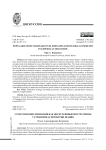
Popularization strategies in eliminating knowledge asymmetry in expert-lay discourse
Статья научная
The article examines replies of healthcare professionals on ask-a-doctor forums, which have barely been treated in terms of popularization strategies employed in expert-lay interactions where a set of specialized concepts needs to be displayed in a way that enables lay users to understand them. The study was thus motivated by the lack of explicit guidance for healthcare professionals who are to interact with lay persons, and challenges faced by lay users in attempting to understand abstract specialized concepts. The study is based on the assumption that popularization strategies improve comprehensibility of medical information, prevent the emergence of communicative problems, and contribute to the dissemination of medical knowledge to a lay audience. A taxonomy of the strategies used by healthcare professionals in disseminating medical knowledge on ask-a-doctor forums is built, linguistic markers that signify these strategies in expert-lay interactions are identified. A corpus-based analysis revealed that definitions, denominations and reformulations were the most common tools employed by doctors to communicate specialized knowledge to lay-forum users. Metaphors and scenarios were infrequent in the corpus. Combined strategies were also used in doctors’ replies, but their share was insignificant. It was concluded that the use of popularization tools in disseminating medical knowledge is an effective discursive mechanism that facilitates understanding among layaddressees and produces specific reactions by resorting to familiar concepts and domains.
Бесплатно
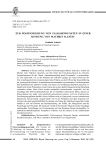
Positioning guests in a Maybrit Illner talk show
Статья научная
In this paper we analyze techniques applied by the producers of a talk show in order to position the talk show guests as relevant participants with respect to the subject of fiscal evasion by celebrities. We analyze how the producers succeed in positioning their guests right from the beginning as prototypical representatives. This positioning is achieved through the coordination of a voice from offstage and the management of the cameras when the guests first appear on screen. Two of five guest introductions are analyzed in detail. The two presented guests demonstrate a clearly antagonistic relationship and their introduction is immediately consecutive. We have reconstructed the introduction of all five guests in detail which resulted in the identification of a network of positions. Unfortunately we cannot present all of our analyses here due to the lack of space. At the positional network’s center lies the thematic and personal “antagonism” which we reconstructed. At the periphery we have four representatives of societally relevant positions who contribute to the topic of the talk show. The four guests respectively represent jurisdiction, politics, and ethics via a lay perspective, psychology and theology. The analysis is theoretically framed by the multimodal notion of “positioning” and “recipient design”, while the applied methodology is multimodal interaction analysis.
Бесплатно
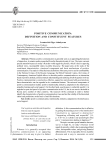
Positive communication: definition and constituent features
Статья научная
Whereas positive communication is generally seen as an appealing phenomenon of interaction, it remains under-researched from the theoretical point of view. The topic warrants special attention because in today's Russian world negativity prevails, which is due to opposing political views, incompatible values in public discourse. The paper aims at the study of the constituent characteristics, structural components and basic mechanisms of positive communication. The analysis of the dictionary definitions of the term positive and its combinability in the National Corpus of the Russian Language, the British National Corpus, the Corpus of Contemporary American English allows to describe positive communication as an interaction based on positive attitude, aimed at mutual understanding and satisfying for all the parties involved. Positive communication is constructive, effective, supportive and coloured with good emotions; these characteristics can be regarded as its constituent features. The universal components of positive communication include: positive intentionality, initiative, adaptation to the interlocutor, empathic listening and social support. On the other hand, assertiveness is culturally specific: it is regarded as part and parcel of positive communication in the US, but is not seen as desirable in Russia and a number of other countries. The research will be continued in order to further identify the characteristics of positive communication, trace and test the validity of the theoretical claims and predictions on the basis of real-life situations.
Бесплатно
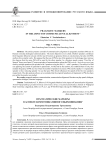
Pragmatic markers in the aspect of communicative alignment
Статья научная
The article presents a model of communicative alignment in pragmatic markers (PM) use in Russian everyday dialogical communication. The main objectives are to check whether speakers coordinate their linguistic behavior not just with the use of lexemes or grammar forms or constructions, but also with PMs and how this actually works. We suppose that the use of PM by one of the speakers in the dialogue may increase the chances that the same PM will be used by the other speaker. In a Russian speech corpus “One Day of Speech” there were found 57 macro-episodes of communication where the PM koroche / koroche govorya was used by multiple speakers (46 episodes with 2 speakers using the PM, 11 - with 3 speakers). The analysis of PM use applying the system of quantitative parameters, worked out by the authors, has enabled them to note, that medium frequency of PM use rises when the number of speakers increases. PM used by speaker 1 is repeated by speaker 2, thus inducing speaker 3 to use the same PM, which influences the speech of the first two speakers respectively. The data analysis allows us to conclude that the original hypothesis of alignment in PMs has been proved for the marker we studied.
Бесплатно
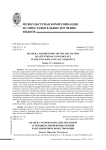
Reader, I married him, или механизм аттенциональной конвергенции в англоязычном повествовании
Статья научная
Цель проведенного исследования заключается в описании аттенциональной конвергенции, определяемой в статье как способ формальной организации повествования, использующий конвергентный потенциал сразу нескольких механизмов фокусирования внимания для интенсификации когнитивной активности читателей. Охарактеризованы «аттенциональные эффекты», связанные с комбинаторным использованием таких типов выдвижения, как сильная позиция текста, эффект обманутого ожидания, сцепление, интекст. Доказана значимость аттенциональной конвергенции в создании когнитивного диссонанса как неотъемлемой составляющей интерпретационной программы современного художественного текста. Действие механизма аттенциональной конвергенции раскрыто на примере произведений современных англоязычных авторов-женщин посредством конструирования гендерной идентичности персонажей. Материалом исследования послужили рассказы Дж. Брискоу, Т. Шевалье, Э. Фрейд, Т. Хедли, С. Хилл, С. Викерс и др., опубликованные в сборнике «Reader, I Married Him», вышедшем в 2017 г. и посвященном 200-летию со дня рождения Шарлотты Бронте. Установлено, что все анализируемые в статье рассказы интертекстуально соотносятся с романом «Джейн Эйр» и предлагают современный взгляд авторов-женщин на проблемы гендерных стереотипов, гендерных ролей и гендерно обусловленного поведения, выражаемый в том числе посредством аттенциональной конвергенции. Результаты проведенного исследования доказывают актуальность дальнейшего изучения механизмов фокусирования / дефокусирования, а также создания множественных фокусов внимания, способствующих повышению экспрессивности повествования, выражению авторской модальности и усилению прагматического воздействия на читателей.
Бесплатно
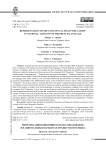
Representation of the conceptual field “education” in national variants of the French language
Статья научная
The paper presents an onomasiological analysis of the conceptual field “Education” exemplified by the vocabulary of the national variants of the French language of France, Belgium, Switzerland, and Canada (Province of Quebec) with the aim to establish the basic nomination principles and identify inter-variational differences within the framework of three sectors of the conceptual field “Education”: “Educational institutions (établissement d’enseignement)”, “Teaching staff (personnel enseignant)”, “Students (étudiants)”. The basic principles of nominating in the field of education are identified by considering the internal conceptual structure of the language units under analysis; inter-variational differences and alterations are stated by categorical-and- semantic comparability of the differentiation semes in the nominations of three sectors of the conceptual field “Education”. The analysis allows to conclude that there exist generic categorical-and-semantic instances within nomination structures that indicate location of training or teaching, specialty, disciplines studied or taught, age, status of the teacher or student, level and methodology of training. In designation of objects in the sectors of the conceptual field “Education” lexical units get into hypernym-and-hyponym relations, thus categorically every sector is formed around some basic concept that is explicated in a hypernym, general nomination for four territorial variants of French, and a set of hyponyms that are more specific and not alike in the exemplification of general semes. The onomasiological analysis of the conceptual field “Education” reveals intervariational concomitant or alternating features, especially in sectors of “Educational institutions (établissement d’enseignement)”, “Students (étudiants)” due to certain social-and-institutional reasons.
Бесплатно
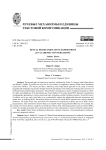
Ritual frame indicating expressions (an academic conversation)
Статья научная
The present paper is based on an interview, conducted by Victor V. Leontyev with Juliane House and Dániel Z. Kádár. It provides an overview of a new theory in pragmatics, namely, Ritual Frame Indicating Expressions (RFIEs). This theory provides a bottom-up and corpus-based approach to the study of various pragmatically important expressions through which the participants of an interaction indicate their awareness of the Ritual Frame underlying the interaction. ‘Ritual Frame’ encompasses a cluster of standard situations in which the rights and obligations of the participants are clearly defined. The corpus-based RFIE approach complements sociopragmatic approaches to various expression types, including so-called ‘politeness markers’, honorifics, forms of address and so on, and it also helps us to systematically capture the relationship between expressions and speech acts. In studying RFIEs, the analyst focuses on the ways in which RFIEs spread across various standard situations. The study of this issue also allows the researcher to contrastively examine the use of RFIEs across linguacultures. Such contrastive research helps us to unearth major linguacultural differences. For example, the research of J. House and D.Z. Kádár has revealed that while in East Asian linguacultures such as Chinese RFIEs tend to be strongly associated with a particular speech act, this relationship is casual in Western linguacultures.
Бесплатно
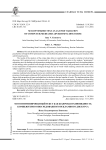
Статья научная
В статье описываются языковые, композиционно-структурные и коммуникативно-прагматические особенности англоязычных SEO-оптимизированных текстов; определяется место данного типа текстов в жанровой структуре рекламного дискурса. Результаты анализа корпусных данных позволяют заключить, что, будучи жанровой разновидностью рекламного дискурса, SEO-оптимизированный текст обладает рядом черт, свойственных современному «прототипическому» рекламному тексту: ведущей ролью стратегии побуждения на коммуникативно-прагматическом уровне; реализацией данной стратегии на синтаксическом уровне за счет использования императивных глагольных форм, перформативных и модальных глаголов; лексическим оформлением стратегии побуждения посредством использования слов, значение которых содержит сему познавательной активности субъекта. Коммуникативно-прагматические и языковые черты, характеризующие данный тип текста как особую жанровую разновидность компьютерно опосредованного рекламного дискурса, обусловлены наличием у него техногенного адресата, что проявляется в низком коэффициенте степени лексической вариативности, высокой доле существительных и прилагательных по отношению к совокупному количеству слов. Реализация оценочной стратегии в SEO-оптимизированных текстах не соответствует требованиям современного рекламного дискурса: в данных текстах не обнаружено усиления достоверности, им свойственна избыточность общеоценочных прилагательных, а также прилагательных в превосходной степени, реализующих тактику «самовосхваления». Оценочная избыточность данного типа текстов обусловливается их основной прагматической направленностью на мгновенный захват внимания потребителя в ущерб реализации ряда тактик самопрезентации, свойственных современному рекламному тексту.
Бесплатно
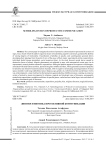
Semiolinguistics of protective communication
Статья научная
The current paper investigates the notion of protective communication represented by systems of signs, texts, rituals which the authors regard as means of neutralizing cognitive constructs, generated by phobias of varying degrees of irrationality. Classification of phobias on psycho- and sociolinguistic grounds allows developing their typology from the point of view of the cause of their origin: supernatural entities (superstition), individual fearful images (prejudice), social suspicion (bias). As the study showed, sacred horror caused by destructive forces of nature, climatic phenomena not subjected to man, and astronomical events gave rise to supernatural, esoteric phobias reflected in superstitions. Biological phobias appeared in response to real dangers, associated with daily human activities, personal imaginarytroubles and fears, which generated a system of prejudice invented by man himself. Social interaction of people, with its negative stereotyping and categorization of social space, entailed a wide range of phobias (racial, religious, age, gender, etc,) which turned into social biases. On his way of development, a man tried hard to find protection against phobias of different nature, creating an extensive system of protective means incorporated in religious, magical and intolerant types of discourse, consequently neutralizing superstitions, prejudices and biases in specific genres, verbal and non-verbal signs, texts and rituals of the above mentioned types of discourse.
Бесплатно
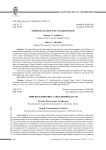
Semiolinguistics of sacred power
Статья научная
The paper addresses the phenomenon of sacred power as the oldest regulator of the behavior of ethnos from the perspective of social semiotics: it includes the definition of this type of power, its basic spheres of actualization (religious and magic) and identification of its lingual-semiotic, ethno-cultural and discourse parameters in the various semiolinguistic ways: sacred objects and buildings, actions and rituals, verbal texts, language formulas being included. The sacred is defined as something inexpressible by its nature, it is stated that it can be approximated to personal understanding only through the symbol. Sacred power generates semiolinguistic space in the form of verbal and non-verbal signs of various form and content that perform their protective impact on the objects of sacred power. Special attention is paid to genres and rituals through which sacred power is exercised. The authors highlight the phenomenon of ceremony that gives a sacred meaning to human actions, and show what special rituals are linked to communicating with the sacred power.The semiotic aspect of religious and magical protection is differentiated by the quality of the sign: religious semiolinguistics involves sacred myths and symbols, and magic semiolinguistics is based on chasing-out and purifying magic with its signs and texts.
Бесплатно
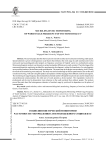
Sociolinguistic monitoring of word usage frequency of youth sociolect
Статья научная
The current paper describes the lexical units ofyouth sociolect and is aimed at monitoring youth speech. Special attention is given to heterogeneous social factors that influence the word usage in youth sociolect and involve micro-and macrosociolinguistic pilot projects on frequency occurrence of English words in a multicultural society. Miscrosociolinguistic analysis was focused on societal and gender differences in youth sociolect. The initial stage of the macrosociolinguistic monitoring included the questionnaire development, setting the boundaries of a sociolinguistic survey and the number of lexical items under consideration. The second step in the project was monitoring itself. Finally, the results of the monitoring were analyzed. The studywas carried out through an online questionnaire, face-to-face and remote interviewing, with native English speakers and speakers ofother languages from different countries and regions. The monitoring of usage frequency demonstrated that a limited number of English lexical units are used in interpersonal and professional communication; the other part of words presents a diverse picture. The respondents involved in professional activity tend to demonstrate more tolerance to the youth sociolect than ordinary people. The analysis proved the point about the heterogeneous character of sociolect usage by youth and its dependence on the sphere of communication.
Бесплатно
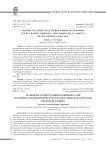
Статья научная
This paper is devoted to the specific features of lettered words’ integration in the graphic, phonetic and grammatical aspects of the Chinese language. The author has analyzed a number of local and foreign studies, covering the main patterns of the lettered words’ integration. Based on Liu Yongquan’s studies, it was concluded that it’s important to strictly follow letters’ case. The case difference can distinguish semantics of different lettered words. Native Chinese speakers with high linguistic competence are able to recognize various lettered words in print, but they may not know how to read them out loud. Therefore, the pronunciation of lettered words is associated with a number of issues: the choice of pronunciation standard, the differentiation of initialisms and acronyms, the choice which syllable to stress. Based on the results of previous research, different ways of how borrowed lettered words respond to the grammatical norms of the Chinese language were identified. The empirical analysis was performed with lettered words extracted by the method of continuous sampling from lexicographic sources. Using the cases described in the paper, the author has proved that in addition to such word-formation processes as compounding, semi-affixation, syntactic and morphological transposition, lettered words can also be formed and transformed with morphological contraction.
Бесплатно
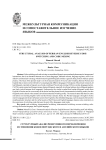
Structural analysis of persian-english reverse code-switching and code-mixing
Статья научная
Code-switching and code-mixing are considered dynamic conversational phenomena in interpersonal interactions, that is an alteration between two or more languages, dialectal variants, language registers, and it is an effective communicative strategy which Persian-English bilinguals consider a genuine thing in their ordinary speech practice. The focus of the present study is on the structural analysis of reverse code-switching between Persian and English that are known to be referred to two typologicallydifferent languages. Participants of the present research, all late bilinguals, reported on frequent use of code-switching (CS) and code-mixing (CM) in everyday language practice. CS/CM is quite normal and frequent among Iranian bilinguals, especially in informal settings where bilingual speakers can freely switch between their languages. Furthermore, the results revealed that Iranian bilinguals switch from English to Persian and in verso mostlyat the lexical and the phrasal levels (intrasentential switching mode), but less frequently at the clausal or the sentence level (intersentential switching mode). The research states that there are some restrictions on inserting English verbs into the Persian syntactic frame: the Persian language is thought to be the matrix language and the preverbal part comes from English as the embedded language, such incongruity between the morphosyntactic structure and the verbal system of the Persian and English languages impose some constraints on the occurrence of switching codes between the pair of the languages under study.
Бесплатно
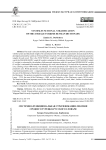
System-functional stratification of the average Turkish-Russian dictionary
Статья научная
The study is aimed at stratifying Rosa Yusipova’s Turkish-Russian Dictionary (2005) in accordance with the system and functional weights of its constituent words. The method is a parametric lexicon analysis (PLA), developed and tested byscientists of Voronezh State University. PLA involves identifying four particular parametric weights for each word. This is the FUNCTIONAL weight (F-weight is indirectly estimated by the length of the word), the PARADIGMATIC weight (P-weight is estimated by the number of synonyms), SYNTAGMATIC weight (C-weight is estimated by the number of phrases and utterances with this word) and EPIDIGMATIC weight (E-weight is estimated by the number of meanings of a word in the dictionary). For each of the 4 parameters, partial core, counting at least 1000 words, was allocated. The words presented in all 4 particular cores, entered a Small parametric core. Words presented in 3 particular cores entered an Average parametric core, words represented in 2 particular parametric cores - a Large parametric core and words presented in 1 particular parametric core entered the core of the Dictionary. Words that are not presented in any particular parametric core make up the Periphery of the Dictionary. The analysis revealed the words of all 4 cores of the dictionary: Small - 140 words, Middle - 630, Large - 3234, the core of the Dictionary - 6861 and the Periphery of the Dictionary counts 18236 words. The dominant (the most important word in the dictionary) was the word iş ‘work, labor’, and the vice-dominant - the word üst ‘the top’.
Бесплатно
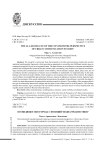
The all-seeing eye ofthe city from the perspective of urban communication studies
Статья научная
The research is carried out from the perspective of urban communication studies and uses the analytical sociolinguistic framework, which provides an opportunity to reveal the role of different semiotic signs in creating the image of a big city as an existential space. The paper focuses on surveillance as a common communication practice and investigates the system of Russian semiotic signs surrounding a citydweller as an object of surveillance. Signs construct the communicative situation of surveillance, which includes a subject, object, place, time, aim of surveillance and the consequences of actions seen as forbidden or undesirable. An important place in the study belongs to the notion of social visibility, which acquires a new meaning in the context of the research. The subjects of surveillance are unidentified representatives of power, whereas its objects are common citizens. Semiotic signs reflect the asymmetry of the social relationship between them (the subject of surveillance is invisible, the object is visible; the state demonstrates the paternalistic attitude towards its citizens). The modality of the message reflects the type of relationship between the subject and the object of surveillance and its social dynamics. The findings indicate that semiotic signs connected with surveillance become a powerful means of social stratification and regulate social relations in Russian urban discourse.
Бесплатно

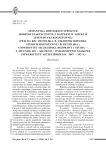
![Splendours and miseries of total play in akunin’s literary oeuvre (book review: snigireva T. A. Boris akunin i ego igrovoy mir [tekst] : monografiya / T.A. Snigireva, A.V. Podchinenov, A.V. Snigirev. - saint petersburg : aleteya, 2017. - 178 P.) Splendours and miseries of total play in akunin’s literary oeuvre (book review: snigireva T. A. Boris akunin i ego igrovoy mir [tekst] : monografiya / T.A. Snigireva, A.V. Podchinenov, A.V. Snigirev. - saint petersburg : aleteya, 2017. - 178 P.)](/file/thumb/149129909/splendours-and-miseries-of-total-play-in-akunins-literary-oeuvre-book-review.png)
